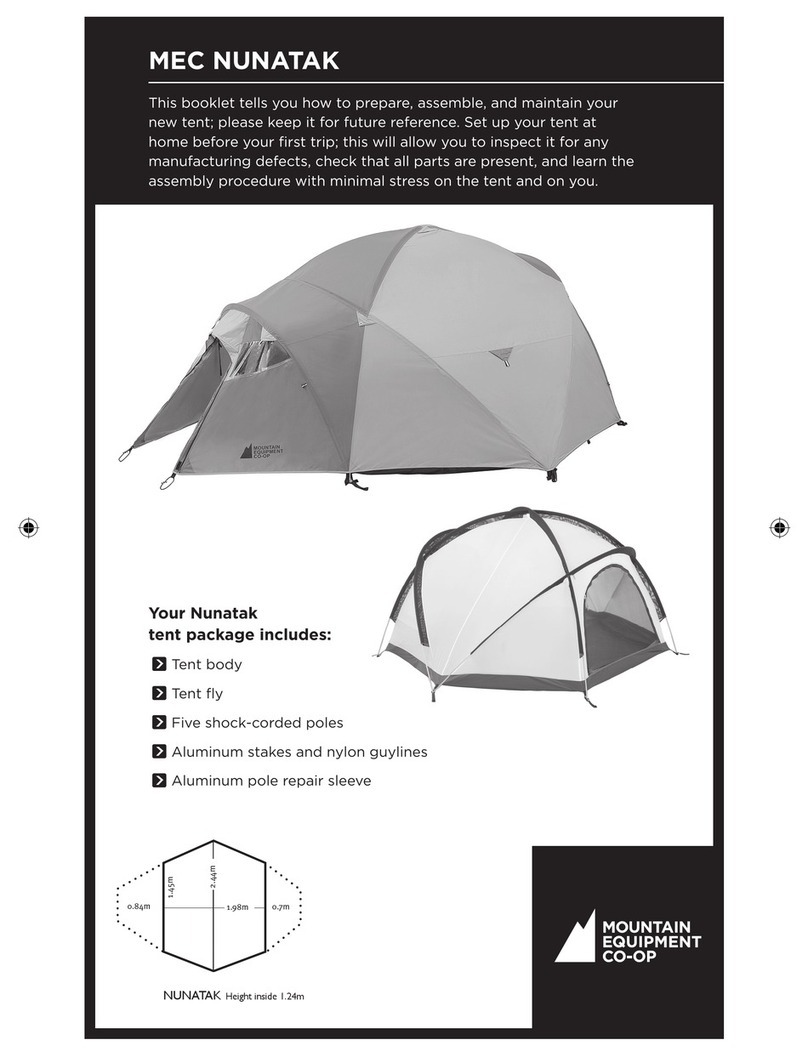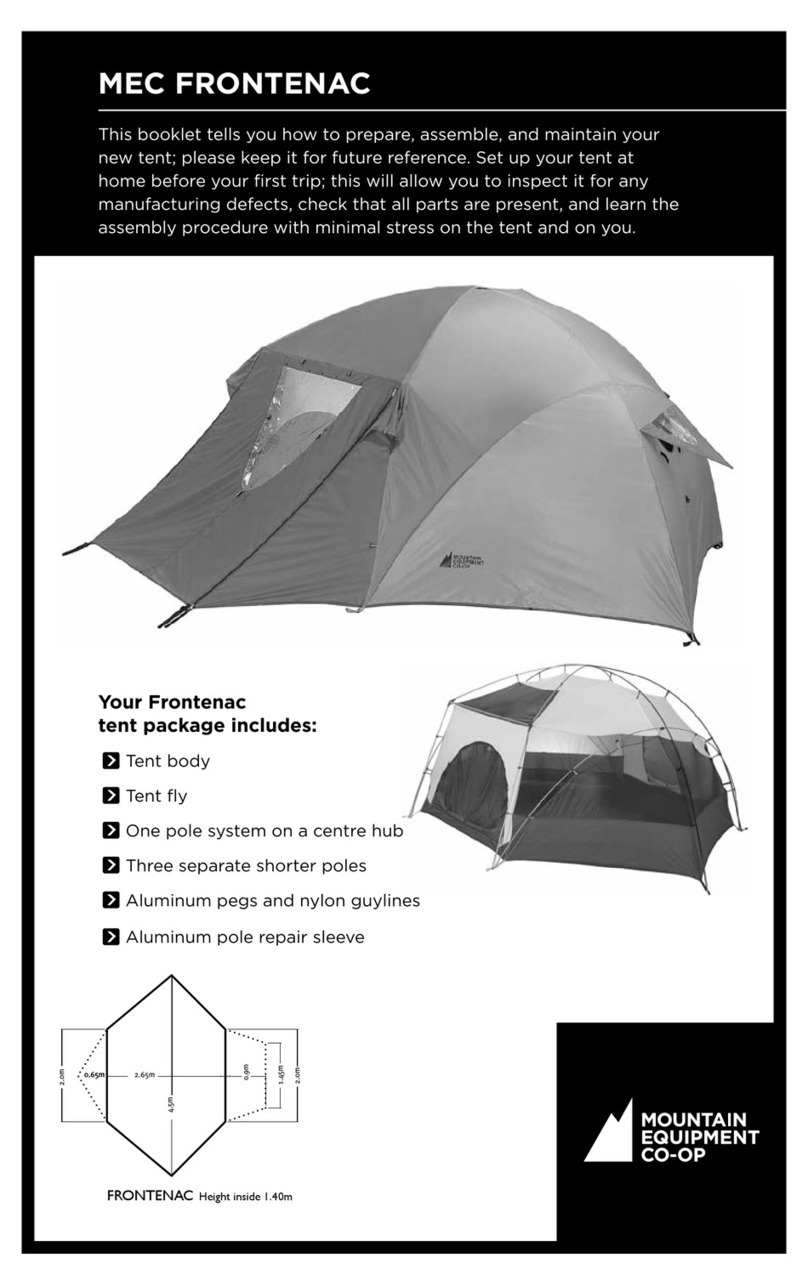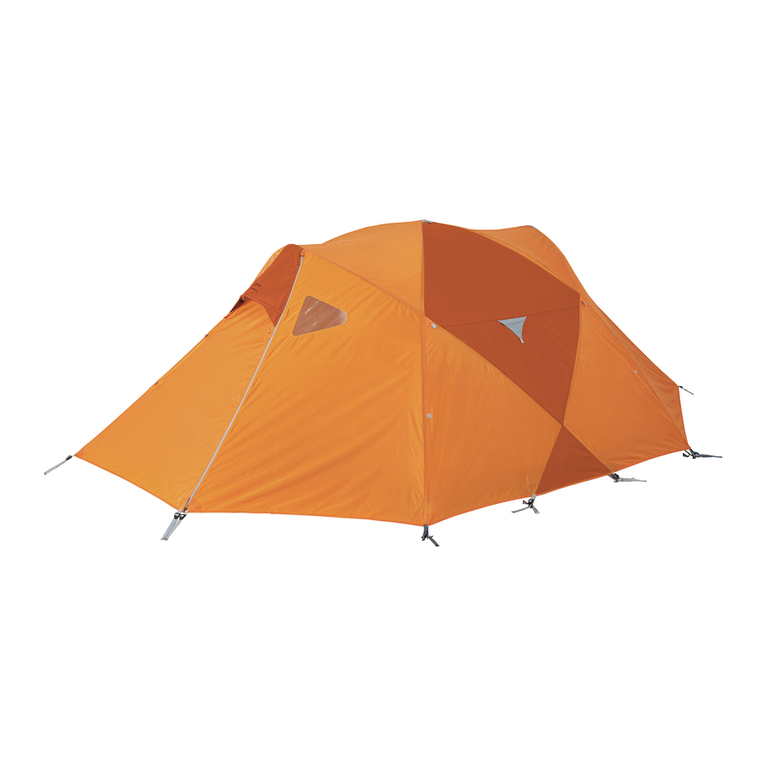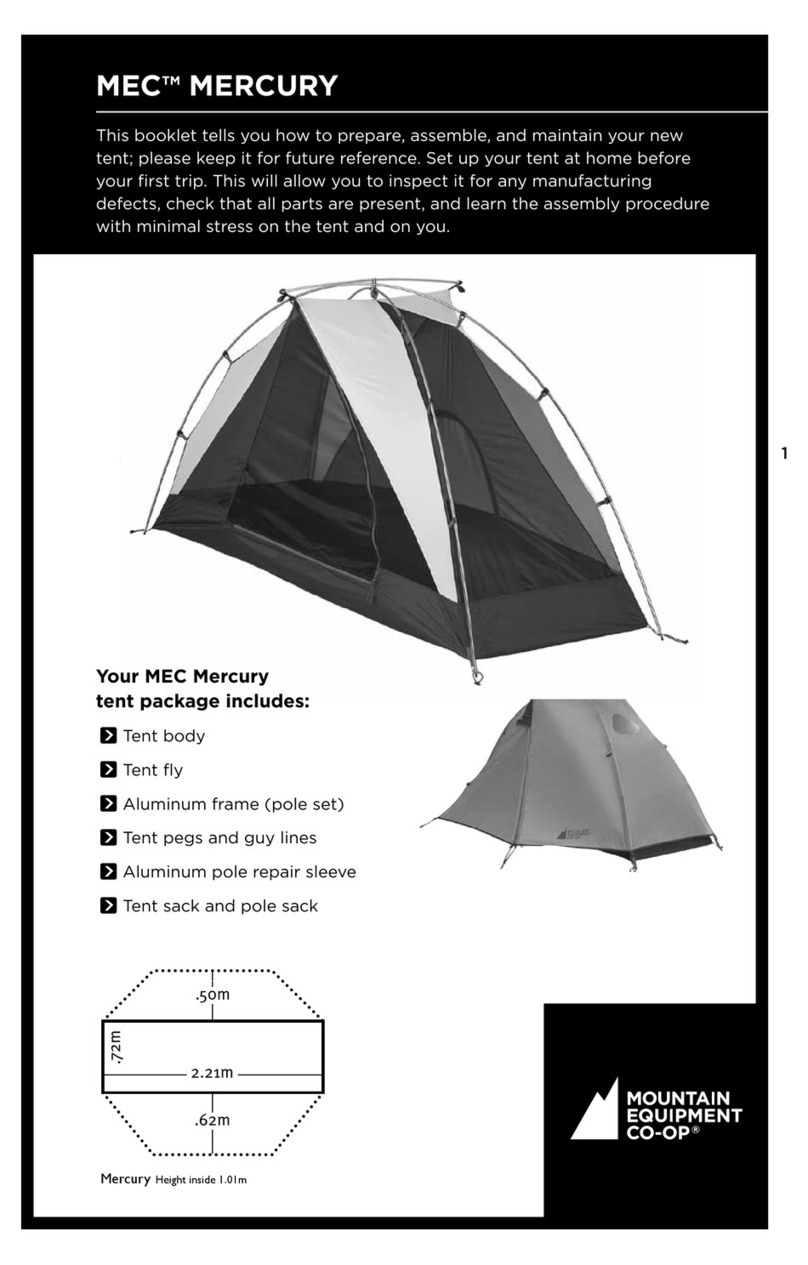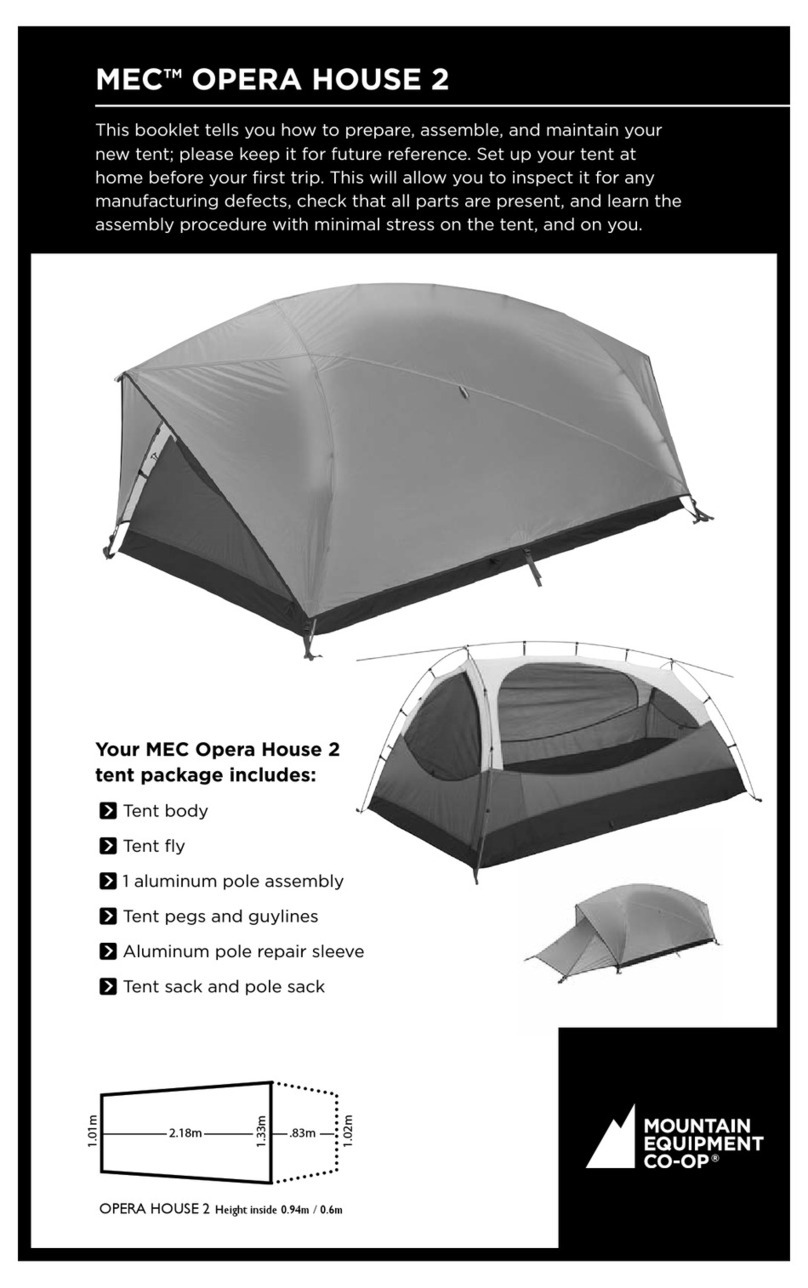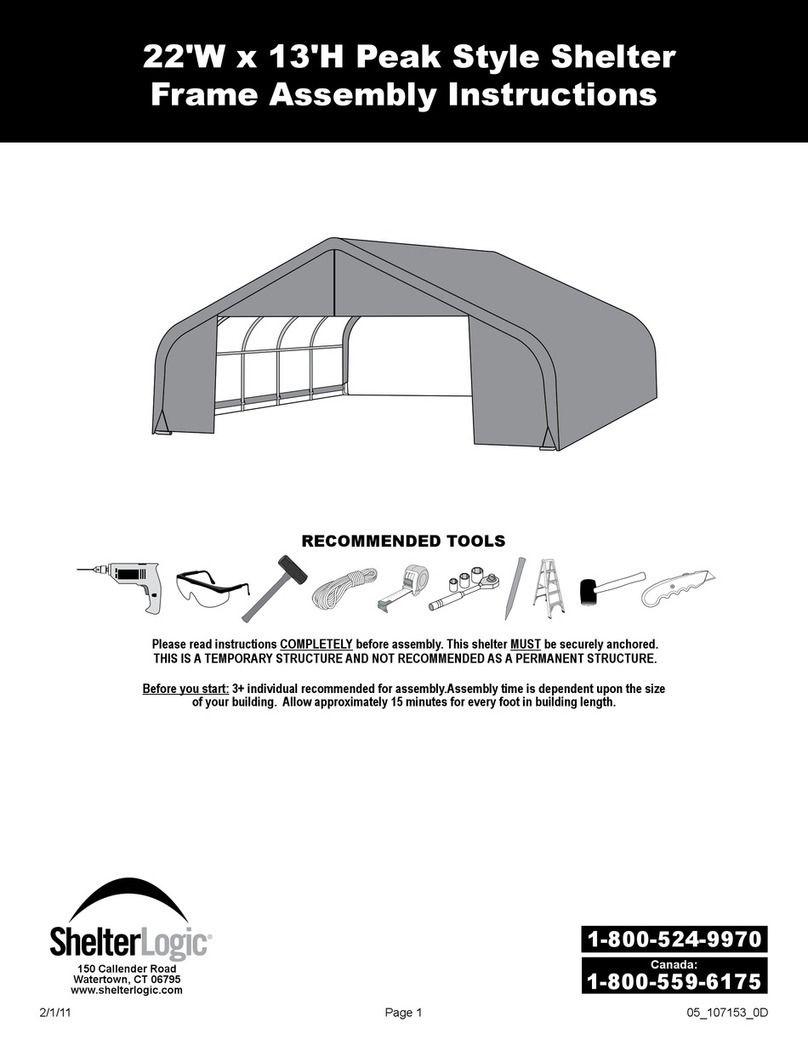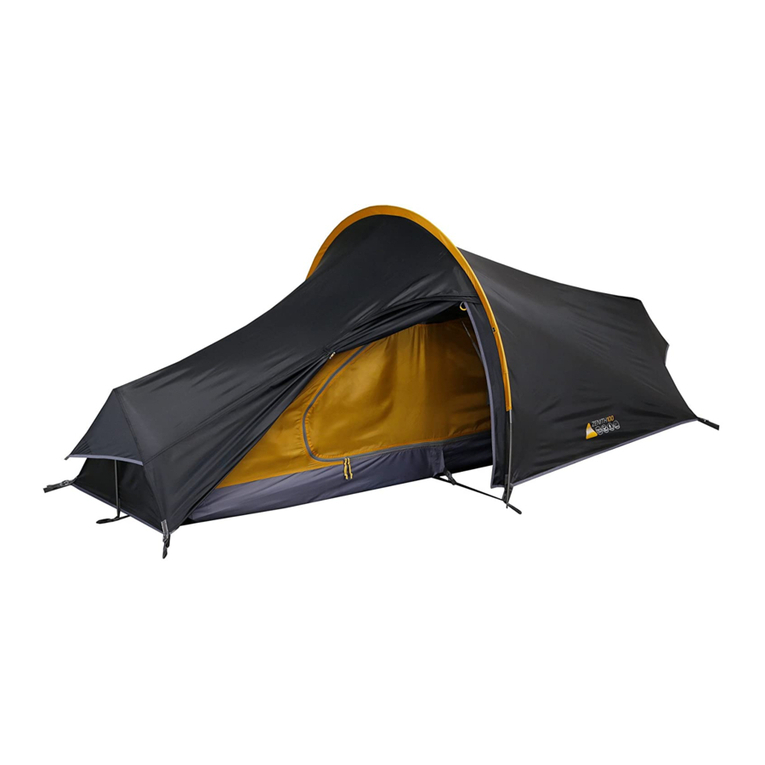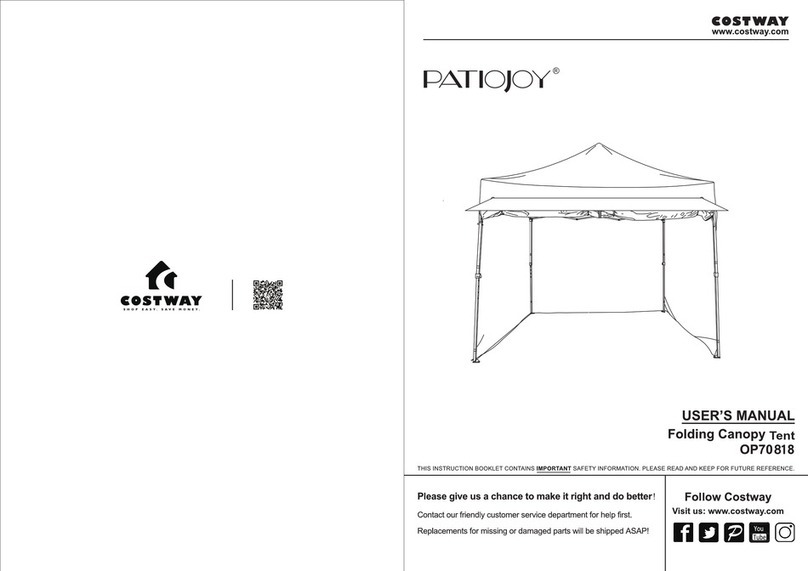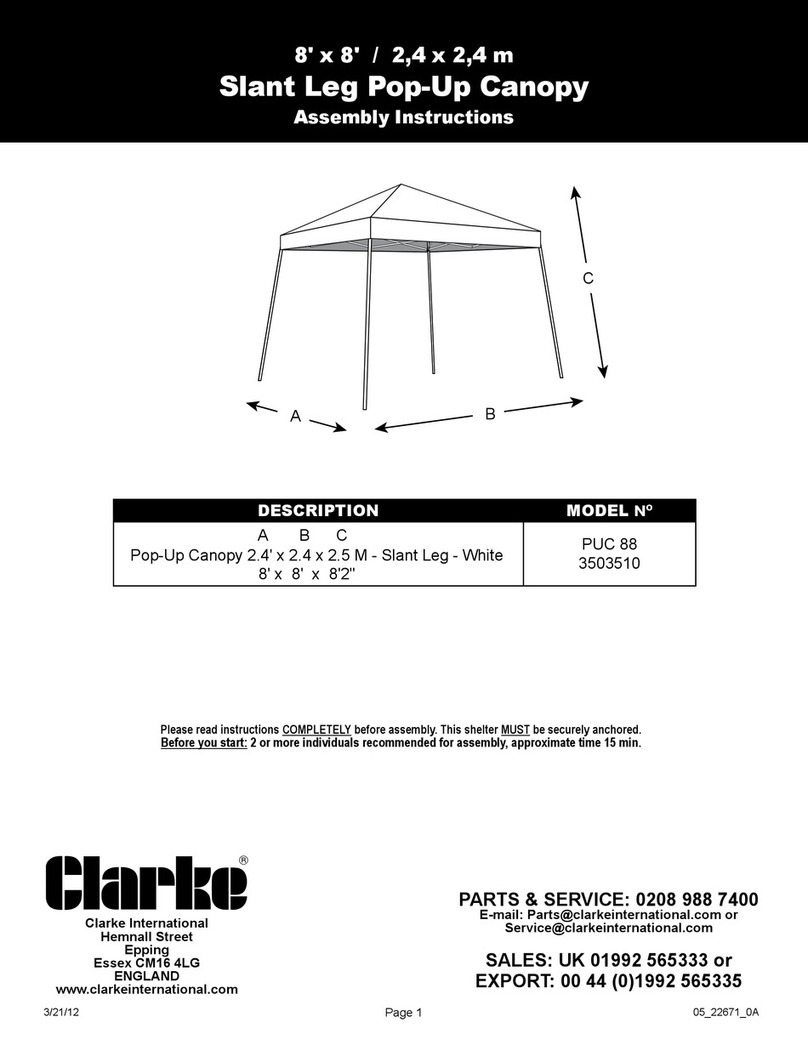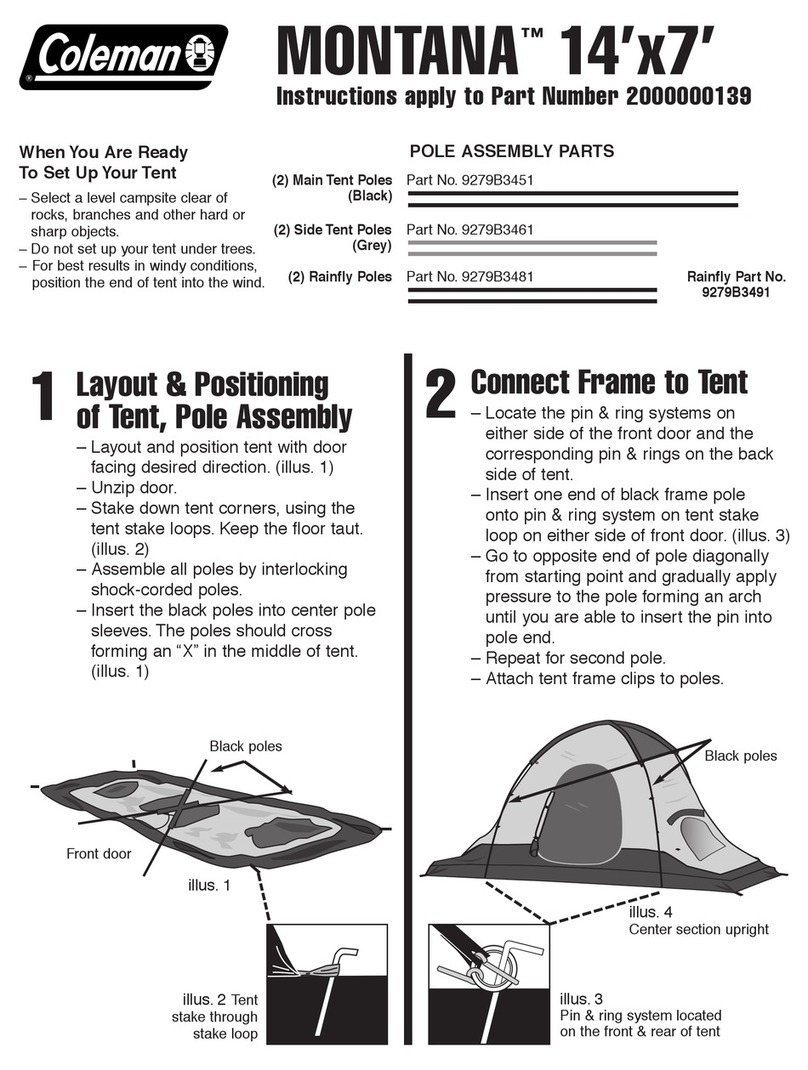
4
TENSIONING
Peg out the two vestibules. Tie back the vestibules in whatever combination provides
the desired balance of ventilation and weather protection. Note that each door has a
shockcord loop on either side of the door zipper where it reaches the ground. By staking
out one loop or the other, you can make each door side-opening or centre-opening to
adapt it to the prevailing wind or local landscape features.
RIGGING FOR BAD WEATHER
The Wanderer 2 has a number of anchor and guyline attachments so you can rig it
increasingly securely in response to actual or anticipated winds. Listed roughly by their
order of “need,” you can:
1. Anchor the floor corners with pegs (if you have not already done so.)
2. Guy out the four corners of the tent using the attachment points that are about
halfway up each corner of the fly.
3. Guy out the triangular attachment points in the middle of each sidewall.
4. Peg out the bungee loops just below each of these triangular attachments.
5. Guy out the small webbing loops on the vestibule vent hoods. (This keeps the
vents open in wind, and supports the large “sail area” of the vestibule walls.)
ANCHORING THE TENT
The #7001-T6 aluminum stakes included with the tent are suitable for general use on
relatively soft ground. However, in very hard-packed ground you will need stronger
(and heavier!) stakes that can withstand the force needed to drive them in. On snow,
sand, or other loose-packed surfaces, wider T-Stakes or aluminum snow stakes will
hold better; these stakes hold best buried horizontally. You can also improvise with
other “stakes” (hiking staffs, ice axes, branches, rocks, trees), using the tent’s stake
loops or cord as required.
When packing for your trip, consider the conditions you’ll likely encounter and what
sort of anchors you’ll require. You can often leave several of the supplied pegs at home
and replace them with improvised anchors, thereby saving weight and space in
your pack.
VENTILATING THE TENT
Proper ventilation is the key to minimizing condensation in any tent. Keep fabric doors
open as widely as the prevailing weather permits. If bugs or drafts aren’t a problem,
leave mesh doors open too. Crack each door open from the top down; warm, moist air
rises and will escape through high openings. If the design of your tent allows for it,
have openings at both ends or both sides of the tent to allow air to flow through for
best ventilation. On very hot nights, when you are confident there will be no rain or
dewfall, you can leave the flysheet off and use the inner tent alone as a “bug tent.”
The supplied taffeta nylon canopy blocks drafts to keep the tent interior warmer in
cold conditions; it also protects against drips from any condensation on the inside of
the fly. If you camp a lot in very warm and/or buggy conditions, you may wish to purchase
the separate inner tent with an all-mesh canopy that is available from MEC (by Special
Order—please be patient). This all-mesh canopy provides maximum ventilation on hot,
still nights; it can also be used without the tent fly as a “bug tent.”


